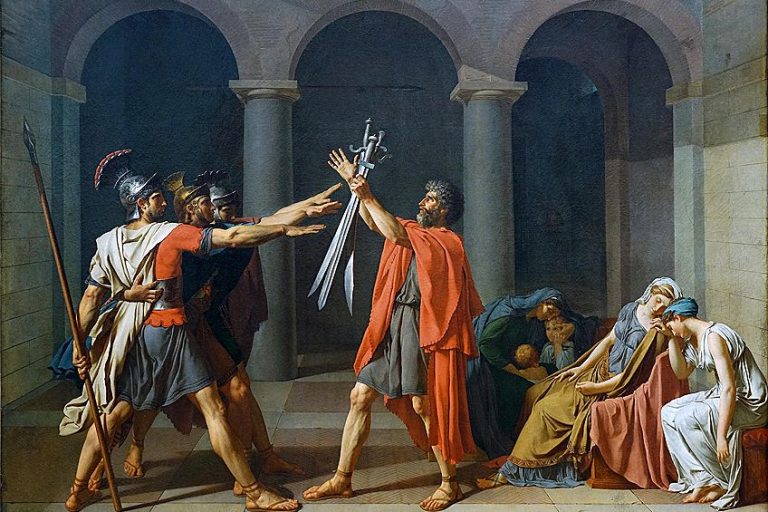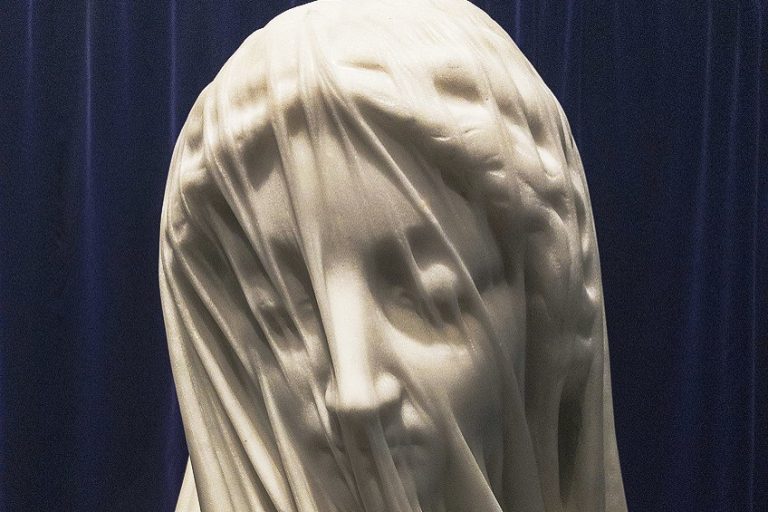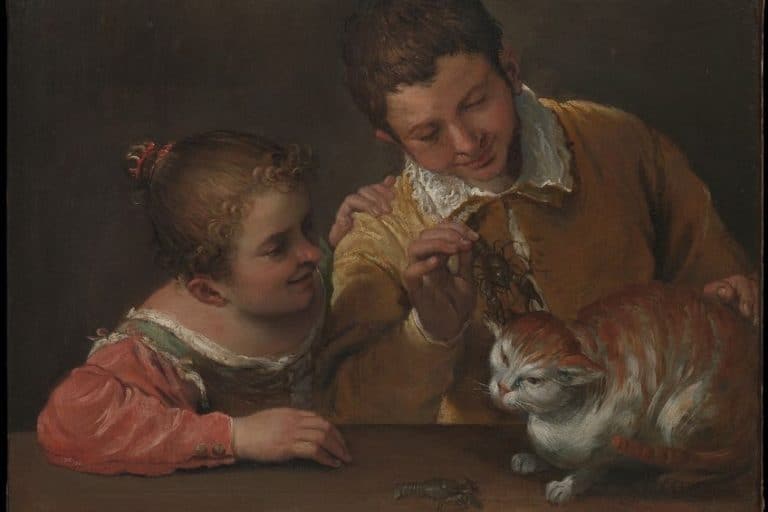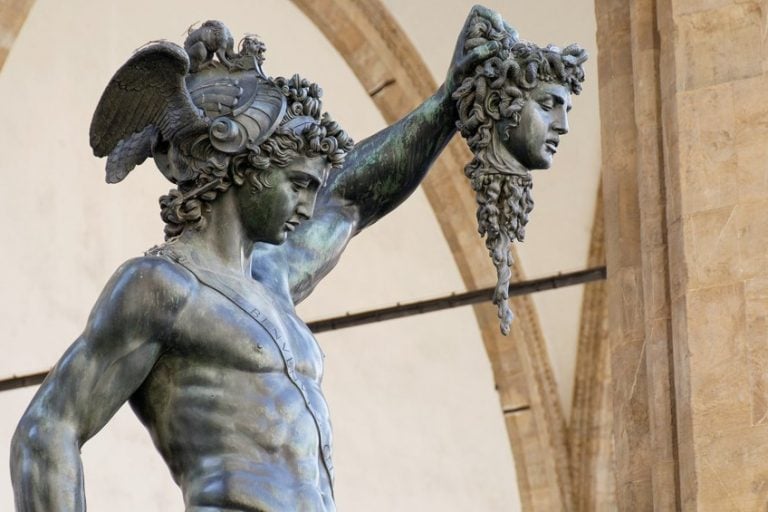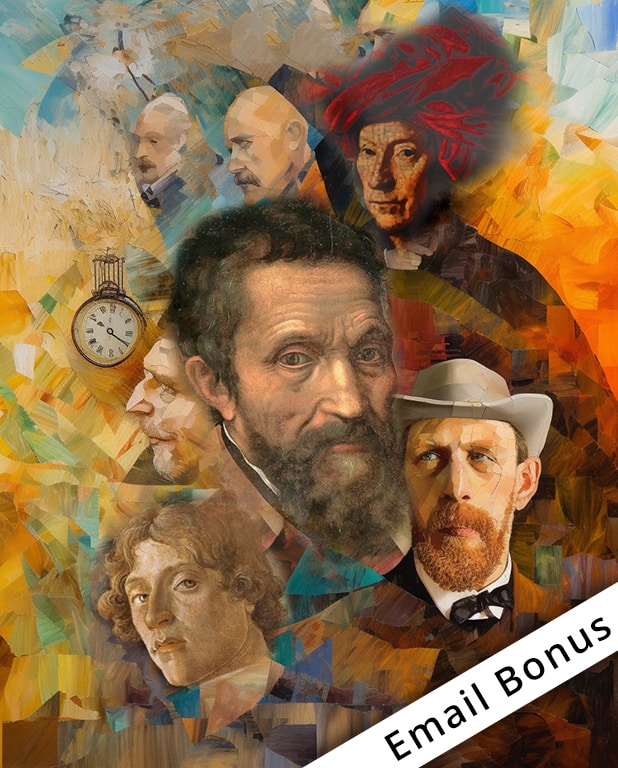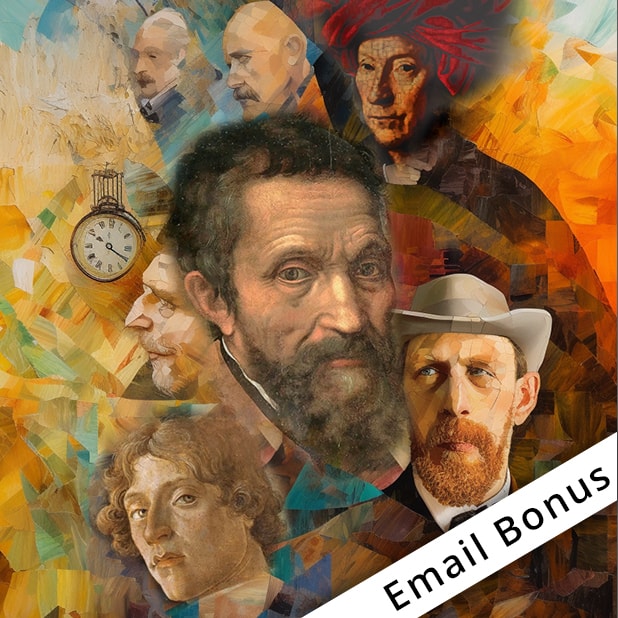“Sunflower Seeds” by Ai Weiwei – An In-Depth Artwork Analysis
How long do you think it takes to hand-paint 100 million porcelain sunflower seeds? This is what the famed installation, Sunflower Seeds (2008), by Chinese artist Ai Weiwei consisted of. Read more below as this article will discuss and explore these captivating little seeds that make up the impressive artwork.
Artist Abstract: Who Is Ai Weiwei?
Ai Weiwei was born on August 28, 1957, in Beijing China. His father was Ai Qing, a well-known poet. Ai Weiwei studied at various institutions, namely the Beijing Film Academy in Beijing where he studied animation, and the Parsons School of Design and the Art Students League of New York, both in New York City. His artistic career ranges from painting, drawing, sculpture, and conceptual art. He also founded the avant-garde art group called Xing Xing, or “Stars” in English. Some of his artworks include Forever (Bicycles) (2003), Straight (2008 – 2012), and Refraction (2014).

Sunflower Seeds (2008) by Ai Weiwei in Context
| Artist | Ai Weiwei (1957 – Present) |
| Date Painted | 2008 |
| Medium | Porcelain |
| Genre | Installation |
| Period/Movement | Contemporary art/Conceptual art |
| Dimensions (Meters) | Seeds are arranged on the Turbine Hall’s floor reportedly at 1,000 square meters and 10 centimeters deep. Seeds are arranged as a cone, reportedly with a diameter of around five meters. |
| Series/Versions | N/A |
| Where Is It Housed? | Tate Modern, London, United Kingdom |
| What It Is Worth | Reportedly, Tate Modern purchased around eight million seeds in 2012, but the price is uncertain. |
In the article below, a contextual analysis will introduce the Sunflower Seeds (2008) installation by Ai Weiwei and what it consists of. A formal analysis will explore how the seeds appear in terms of the existing art elements that compose them.
Contextual Analysis: A Brief Socio-Historical Overview
Sunflower Seeds (2008) by Ai Weiwei, which is Kui Hua Zi in Chinese, consists of over 100 million porcelain sunflower seeds which were all handmade by over 1,600 crafters in Jingdezhen, famously known as the “Porcelain Capital”, in China.

The Annual Unilever Series
Ai Weiwei reportedly started the production of the seeds in 2008 and was commissioned to display the end products as an installation in the Tate Modern’s Turbine Hall from October 12, 2010, to April 25, 2011. This commission was sponsored by the annual Unilever Series, which started in 2000 and ran until 2012 using the Tate’s Turbine Hall as the main space where the selected artists displayed their art each year. Ai Weiwei’s installation was the eleventh in the Unilever Series, and he was reportedly the first artist from Asia-Pacific.
Ai Weiwei filled up the Turbine Hall’s floor space with millions of his seeds, which created an extraordinary sensory experience for visitors to the museum. His seeds were in two different arrangements: covering the floor, which molded to the floor’s measurements. Reportedly it was 10 centimeters deep.
The other arrangement was in a cone shape, the seeds were reportedly “poured” from above and created a pile, which was then formed into the cone shape. Its diameter was around five meters.
The Turbine Hall undoubtedly offers a large and impactful space for artists to display their works. Alongside Ai Weiwei’s Sunflower Seeds, just a few of the artists who have utilized the space include the French artist, Louise Joséphine Bourgeois, who created I Do, I Undo and I Redo (1999 – 2000), which was reportedly the first commission for the Unilever Series.

I Do, I Undo and I Redo comprised of three towers made of steel with heights around 9 meters. The towers had spiral staircases that wound around each and opened to a flat area at the top where visitors could sit. Attached to these areas were several large mirrors. At the bottom of the towers were openings into the cylindrical towers with bell jars inside, which had figures of a mother and child.
The Icelandic-Danish artist Olafur Eliasson created The Weather Project (2003) for the Unilever Series in 2003, which was the fourth commission.
It mimicked the sun and weather with mirrors on the ceiling, a semi-circular screen that was backlit by lights and appeared full through the reflection in the mirrors, and mist, all of which created the effect of a beautiful full sun. Eliasson’s installation was reportedly widely successful, and visitors were in the millions. Another unique example of one of the Unilever Series artworks was the eighth commission by Doris Salcedo titled Shibboleth (2007 – 2008), which was a long crack that ran along the Turbine Hall’s floor, reportedly 167 meters long. According to the artist, it symbolized the ideas of segregation and borders.
Getting to Know the Tate’s Turbine Hall
The Turbine Hall, which is also the entrance of the Tate Modern art gallery in London, is just as extraordinary a space that can contain not only millions of sunflower seeds, but numerous other installations of all shapes and sizes. Some of these works have been mentioned above.
The Tate Modern building used to be the Bankside Power Station and the Turbine Hall used to be where the electricity generators were housed.
It measures 26 meters tall with a floor space available for artwork displays reportedly at 3,300 square meters. The power station was converted to the Tate Modern in 1994 and it opened in May 2000. The conversion was done by the architects Jacques Herzog and Pierre de Meuron who own their architectural firm called Herzog & de Meuron.
Crafting Ai Weiwei’s Sunflower Seeds and Its Symbolism
As stated above, the Sunflower Seeds by Ai Weiwei were all handmade by crafters/artisans in Jingdezhen, which is a city in the Jiangxi province of China. The process was over two years long. It is alternatively known as the “Porcelain Capital” because of its prolific production of porcelain. Porcelain is a type of ceramic that is fired at high temperatures with non-porous and robust qualities. It has a rich history that dates to over 1, 000 years, and one that is worth noting when you look at artists like Ai Weiwei, who have shone the spotlight on this age-old ware in contemporary art.
Porcelain making reportedly started around the Han Dynasty, which was around 206 B.C. to 220 A.D., but its precursor has been attributed to the earlier Shang Dynasty, which was from 1600 to around 1046 B.C., and known as “Proto-Porcelain”.
The production of porcelain during the later Tang Dynasty, which was from 618 to 906 A.D, evolved further and white porcelain was made. The production procedure for the sunflower seeds has been described as done in a “cottage industry” environment, which is a smaller and more personal production process compared to a factory setting. Reportedly, the crafters/artisans worked at their homes or in workshops. The artist himself was also present during these processes and closely collaborated with the crafters/artisans.

There were reportedly over 1, 600 craftspeople who produced the sunflower seeds and hand painted each seed. You would assume that a factory production line would be the widely utilized method, but with this, Ai Weiwei evoked ideas of mass production and the collective versus individuality and the unique singular. This leads to what Ai Weiwei’s Sunflower Seeds symbolize. The artist addressed the, often strained, relationship between the collective and individual, notably referring to the Chinese population and their place within the broader Chinese society.
Additionally, some scholarly sources have suggested the sunflower seeds act as metaphors for the Chinese population and the power structures in society that transform, and possibly take away, the individuality of one person, who becomes part of the masses, and in turn, the masses become one large entity, in other words, the Chinese population.
Where does this process leave the individual person and is their personal power compromised or censored?
Or is there a symbiosis? This is ultimately a socio-political and historically loaded question regarding the Chinese population because Ai Weiwei referred to the hierarchy of powers, notably during Communism. Reportedly, the sunflower seeds were often portrayed in propagandist artwork during the rule of Mao Zedong, also named “Chairman Mao”. He was the founder/leader of the Chinese Communist Party in 1949. Some of the common themes of the above-mentioned propaganda artworks would often depict the population as sunflowers and Mao Zedong as the sun.

Apart from the political symbolism of the Sunflower Seeds by Ai Weiwei, they also symbolize nourishment. Reportedly, sunflower seeds are loved snacks in China, and Ai Weiwei has been widely referenced in his recollection of how he grew up with sunflower seeds as a “treat”.
Furthermore, the sunflower seeds also symbolized hope, especially during challenging periods.
Apart from the political and social meanings of the sunflower seeds, Ai Weiwei also touched on ideas of consumerism on a more global level that reaches beyond China. The artist explores the “Made in China” reference and how mass production has become one of the main modes of consumerism, notably with China’s mass producing and exporting to the rest of the world.
Formal Analysis: A Brief Compositional Overview
The formal analysis will shift the gaze from the collective (millions of seeds) and look at the individual, in other words, one seed and its appearance in terms of the art elements that compose it. It is important to note that Sunflower Seeds by Ai Weiwei is an interchange between all the seeds seen as one entity and one seed seen as a singular entity.

Subject Matter: Visual Description
As previously mentioned, Ai Weiwei’s Sunflower Seeds were presented in two arrangements. One covered the floor of the Turbine Hall, which is a rectangular shape, and it was reportedly around 10 centimeters deep. Its measurements were dependent on the floor’s measurements.
The next arrangement was what is described as a cone, which was fashioned in that manner after the seeds were reportedly “poured” from above creating a pile.
The measurements for this were reportedly around five diameters. Additionally, each sunflower seed resembles a real-life sunflower seed that is still in its husk, or with its shell on. Due to these seeds being individually hand painted, each one will have a uniqueness about it.

Color
The Sunflower Seeds by Ai Weiwei appear in neutral colors, mainly a dark grayish black from the paint applied in strips leaving the creamy-white of the porcelain’s color. Reportedly, according to the artist, it took around three to four strokes of paint for one seed, and sometimes four to five strokes.
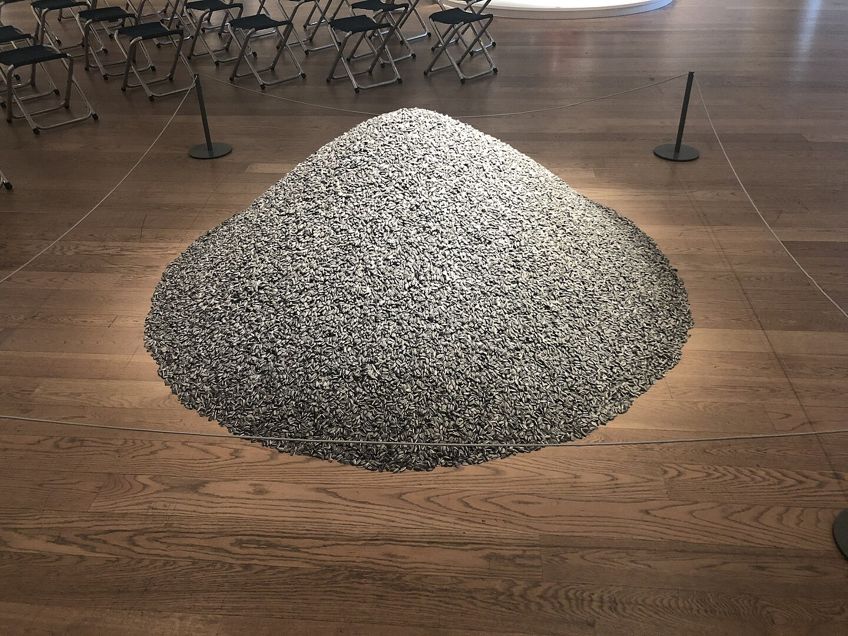
Texture
The tactile texture of the Sunflower Seeds by Ai Weiwei appears smooth with some areas of roughness, which is the physical texture of the porcelain it is sculpted from.
The implied texture is created by the painted colors on it, which resembles what an actual sunflower seed will appear as.

Line
The lines in Sunflower Seeds by Ai Weiwei appear curved, following the shape of the seed’s shell. Some of these lines are thick and others appear thinner due to the way the paint has been applied.

Space
Sunflower Seeds by Ai Weiwei occupies a three-dimensional space, individually it can be held in your hand. Collectively, these are arranged in piles or as a bed of seeds (as mentioned above).
An interesting fact about the Sunflower Seeds is that visitors to the Turbine Hall could initially interact with the seeds, some people lay on them to feel their tactile qualities or walked on them.
However, due to the large amounts of dust that emanated from these interactions, visitors were only allowed to view the seeds in their space from a distance because they were cordoned off, which further impacted the relationship between the seeds and the visitors.
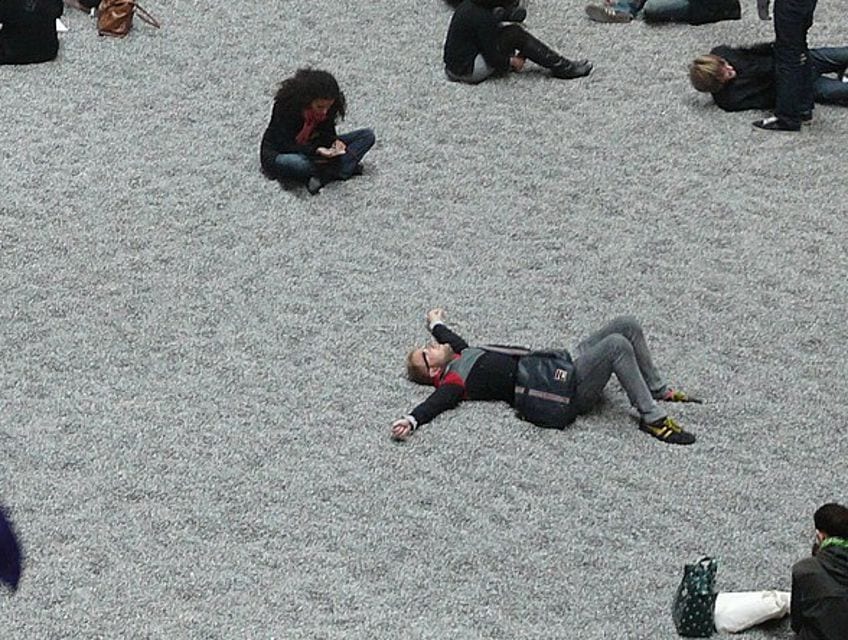
Shape and Form
The shape of the Sunflower Seeds by Ai Weiwei is ovular and three-dimensional in its form because it is a sculpted piece.

Kernels of Truth
Ai Weiwei’s Sunflower Seeds encapsulates a deeper core filled with a variety of truths that touch on socio-political issues that have presented themselves throughout the course of Chinese culture and history. It also touches on issues within contemporary society, a culture that basks in the bounty of mass production.
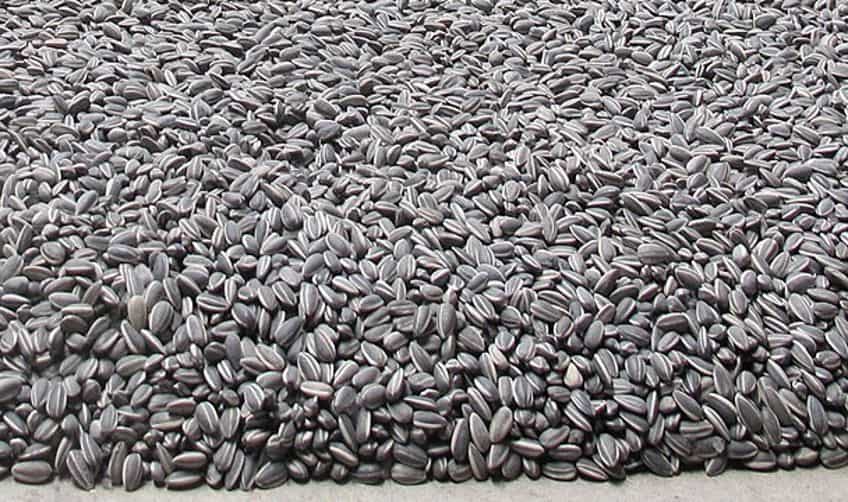
The Sunflower Seeds installation by Ai Weiwei was a significant example of art that raised awareness around important societal issues. It also created employment opportunities for those who handmade each porcelain seed, further becoming something that was seemingly more than art.
Frequently Asked Questions
What Are Sunflower Seeds by Ai Weiwei Made Of?
The installation titled Sunflower Seeds (2008) by Ai Weiwei is made out of porcelain seeds and was individually hand-painted by over 1,600 crafters in Jingdezhen, China. This area is also nicknamed the so-called Porcelain Capital.
What Does Sunflower Seeds by Ai Weiwei Symbolize?
Sunflower Seeds (2008) by Ai Weiwei symbolizes the singular versus the collective of Chinese people. It has been described as a so-called metaphor. It touches on the concepts related to the people’s place in Chinese society. It was also a recollection of the artist’s memories of sunflower seeds from childhood.
How Many Sunflower Seeds Were Made for Ai Weiwei?
There are over 100 million porcelain sunflower seeds that compose the installation titled Sunflower Seeds (2008), or Kui Hua Zi, by Ai Weiwei.
Alicia du Plessis is a multidisciplinary writer. She completed her Bachelor of Arts degree, majoring in Art History and Classical Civilization, as well as two Honors, namely, in Art History and Education and Development, at the University of KwaZulu-Natal, South Africa. For her main Honors project in Art History, she explored perceptions of the San Bushmen’s identity and the concept of the “Other”. She has also looked at the use of photography in art and how it has been used to portray people’s lives.
Alicia’s other areas of interest in Art History include the process of writing about Art History and how to analyze paintings. Some of her favorite art movements include Impressionism and German Expressionism. She is yet to complete her Masters in Art History (she would like to do this abroad in Europe) having given it some time to first develop more professional experience with the interest to one day lecture it too.
Alicia has been working for artincontext.com since 2021 as an author and art history expert. She has specialized in painting analysis and is covering most of our painting analysis.
Learn more about Alicia du Plessis and the Art in Context Team.
Cite this Article
Alicia, du Plessis, ““Sunflower Seeds” by Ai Weiwei – An In-Depth Artwork Analysis.” Art in Context. October 26, 2023. URL: https://artincontext.org/sunflower-seeds-by-ai-weiwei/
du Plessis, A. (2023, 26 October). “Sunflower Seeds” by Ai Weiwei – An In-Depth Artwork Analysis. Art in Context. https://artincontext.org/sunflower-seeds-by-ai-weiwei/
du Plessis, Alicia. ““Sunflower Seeds” by Ai Weiwei – An In-Depth Artwork Analysis.” Art in Context, October 26, 2023. https://artincontext.org/sunflower-seeds-by-ai-weiwei/.





